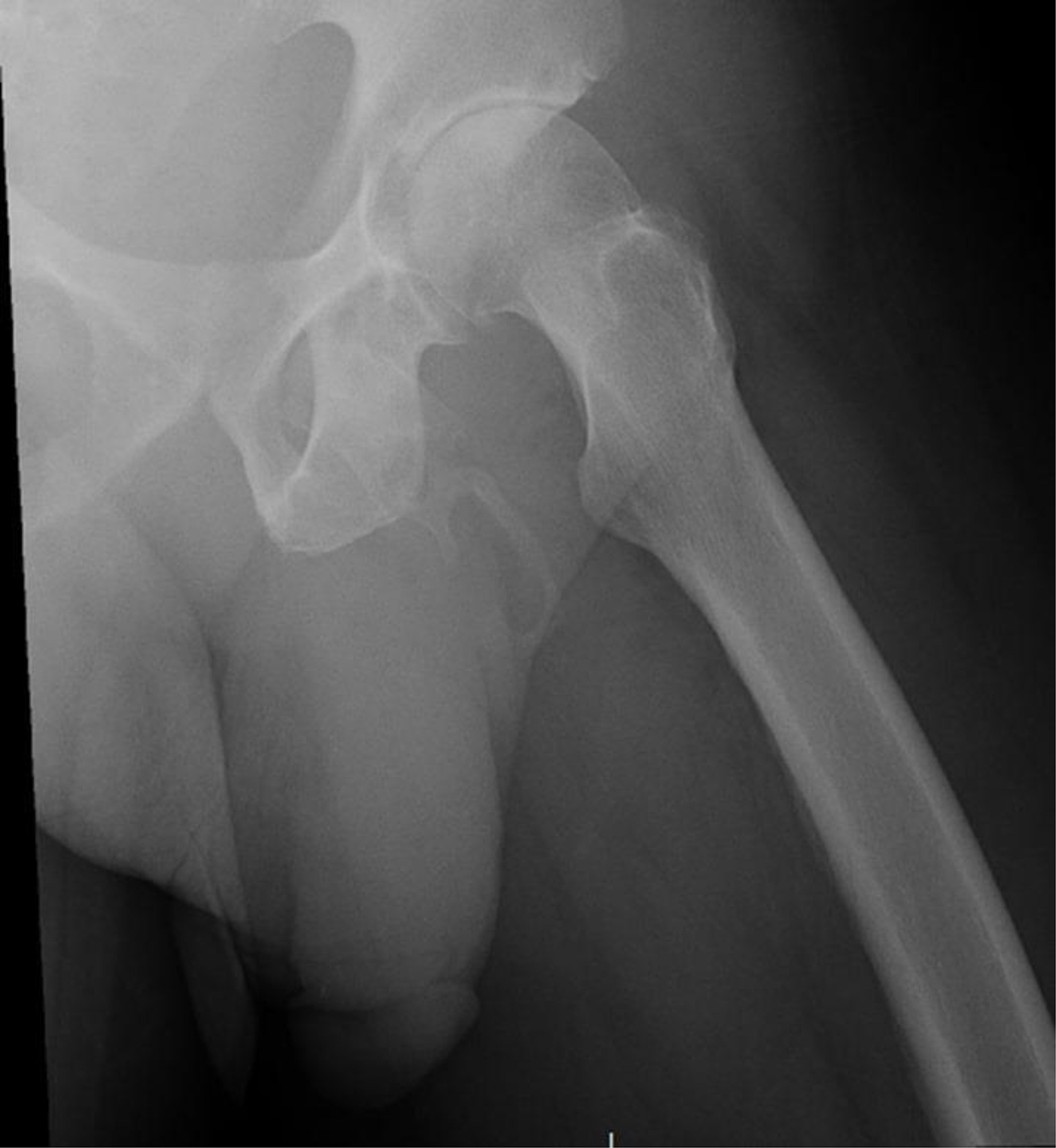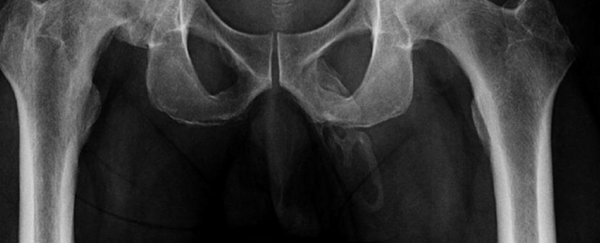The human body is marvellously complicated, so it's no wonder that sometimes things can go spectacularly wrong - and we only find out by accident.
That's what happened to a 63-year-old man who went to a New York emergency department for left knee pain after falling on his behind, and ended up with an alarming and rare diagnosis - penile ossification.
The doctors found the shockingly rare case when they took an X-ray of the man's pelvis to check for signs of bone fracture due to his fall. Instead, they spotted a bone-like calcification in a truly unexpected place.
Calcium salts had built up in his soft tissue and hardened into "an extensive plaque" along his entire penile shaft, which is visible in the radiograph below.
 (Hasbani et al., Urology Case Reports, 2019)
(Hasbani et al., Urology Case Reports, 2019)
Aside from some pain, the patient presented with no other symptoms of this condition such as discharge or swelling. Penile ossification can cause reduced flexibility and can eventually lead to erectile dysfunction, the case report explains.
But before the doctors could perform any further examinations, including possibly determining the cause, the man decided to leave, ignoring the medical advice he'd received.
Penile ossification was first described in humans back in 1827, but remains a rare condition, with fewer than 40 documented case reports. Its most common cause is Peyronie's disease, where fibrous scar tissue forms within the penis; it can also occur due to trauma, end stage kidney disease, or other conditions that lead to excess calcium in the body.
"The treatment of penile ossification depends on the extent of corporal ossification and the symptoms of the patient," Georges El Hasbani from American University of Beirut and colleagues explain in their case report.
"Those with a bothersome acute pain or chronic mild pain may be managed with oral analgesics, topical agents, intralesional injections, mechanical stretching or vacuum devices, and extracorporeal shockwave therapy. Severe cases of chronic pain or erectile dysfunction are usually managed surgically. "
Penile ossification is actually more commonly seen in ageing dogs, but dogs already have a bone in their penis. In fact, most mammal species do.
This has led some scientists to speculate whether it might occur in humans due to an evolutionary throwback, but the condition has more recently been accepted it as a quirk in our bodies' fibrous connective tissues.
"The human body is able to form bone tissue or cartilage in places affected by pathological conditions when connective tissue is present," medical researchers explained in a literature review.
"Bone tissue is known to originate even in places having nothing in common with the skeleton, including the mammary gland, salivary gland and the testes."
This latest of rare cases was documented in Urology Case Reports.
